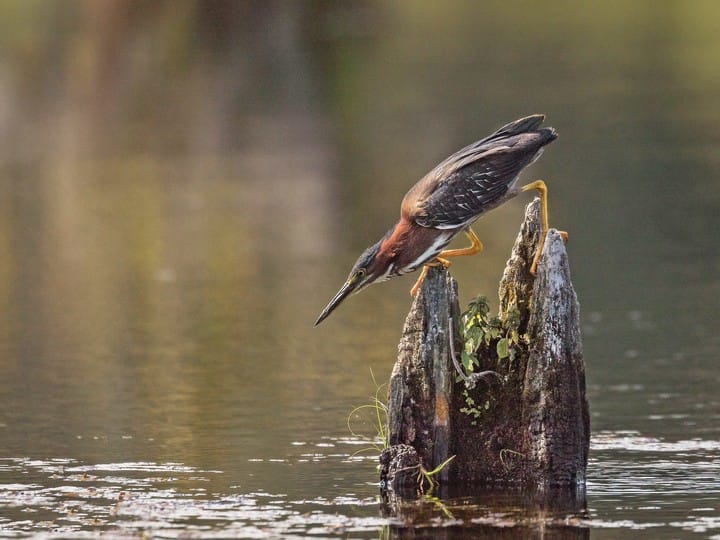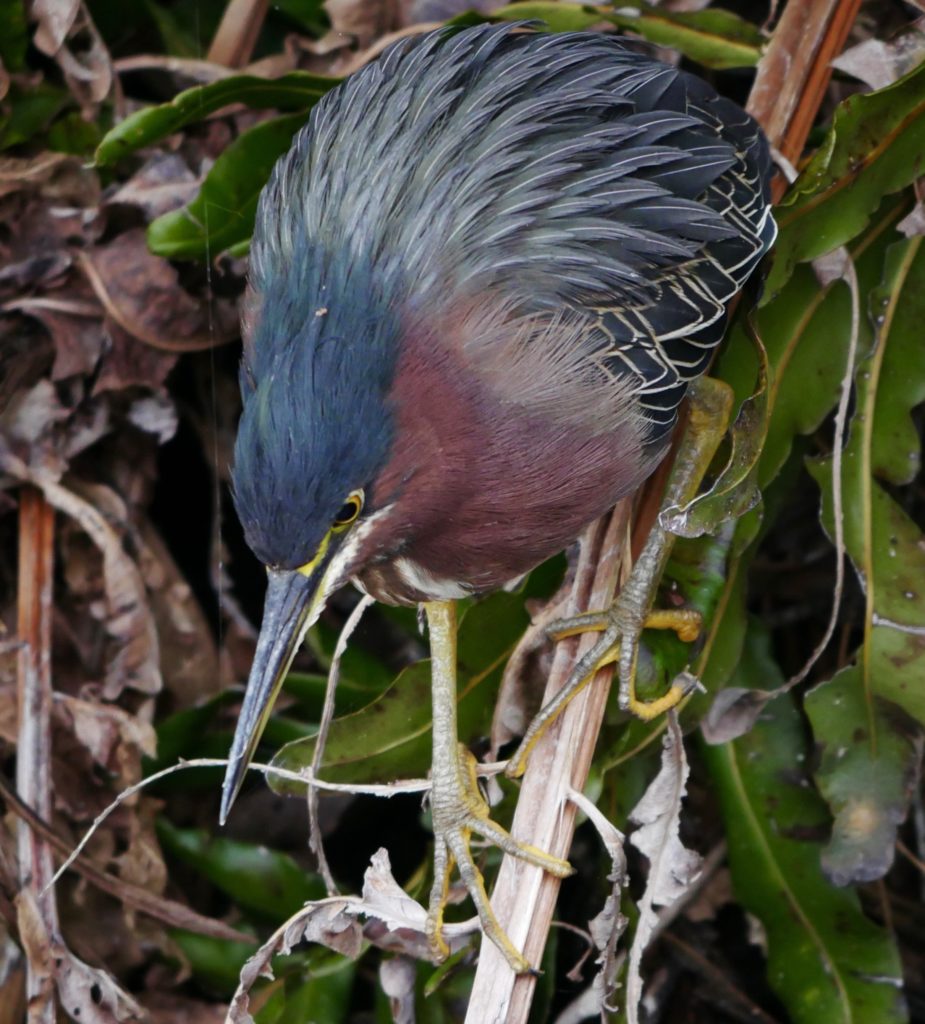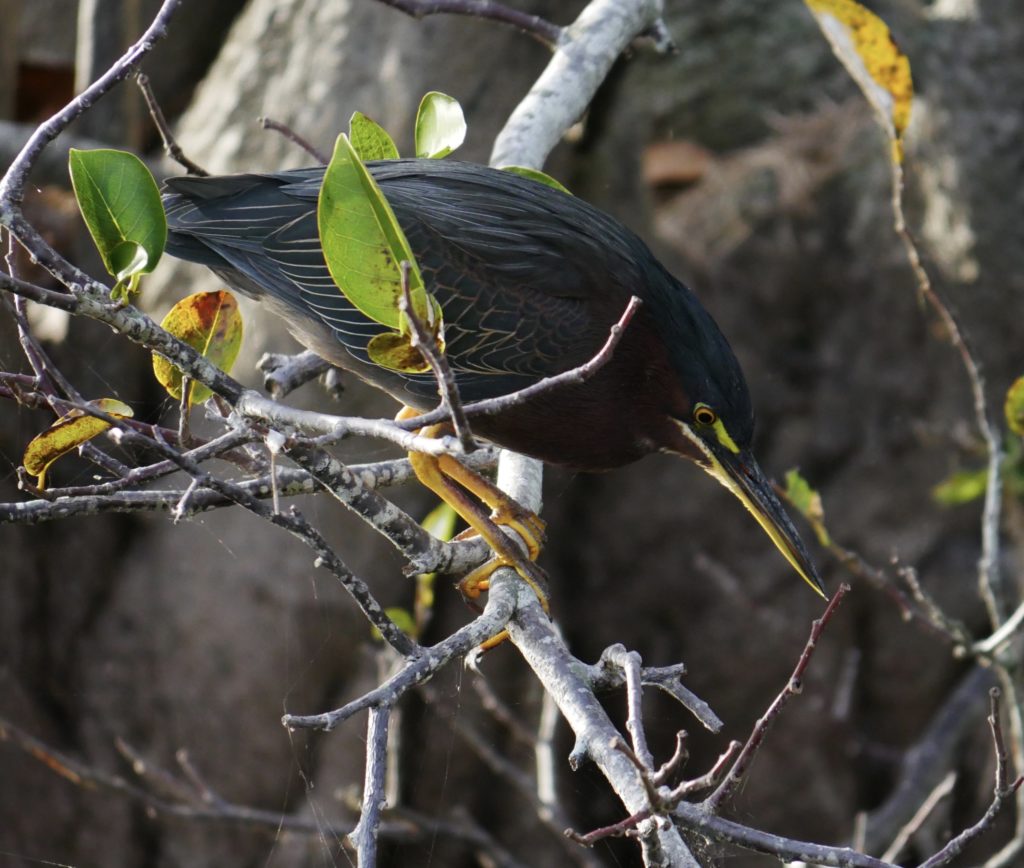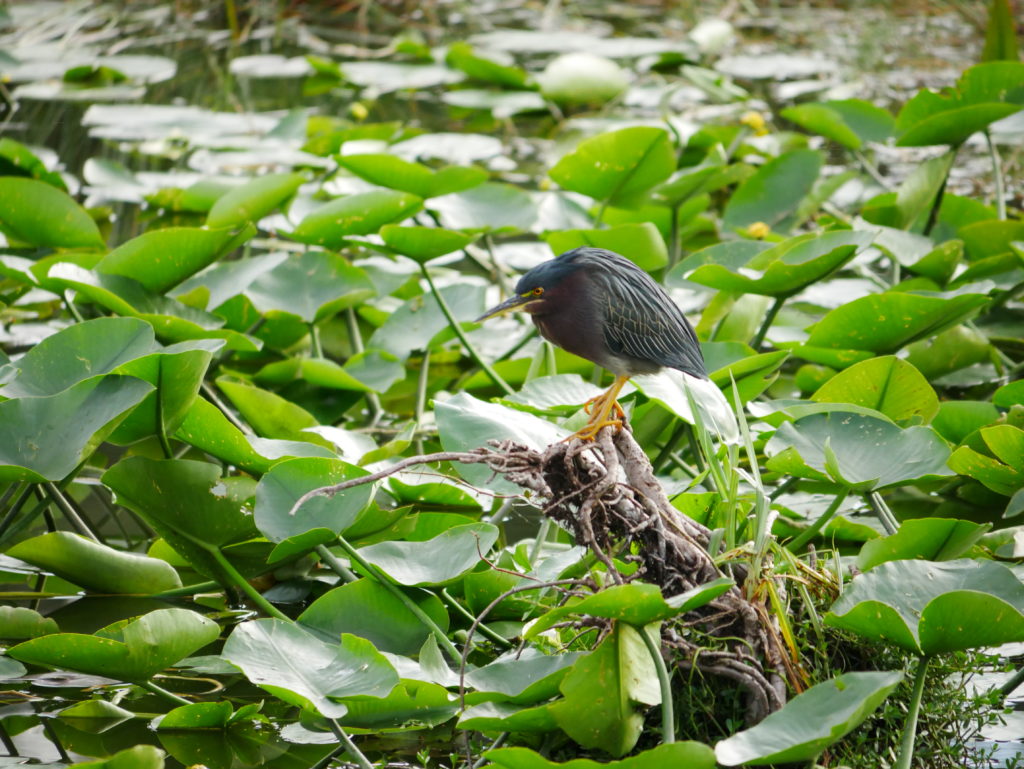Photo Courtesy: Valerie Gebert
“They look like a kindergartner that dressed for school, choosing bright pants that didn’t match the multiple colors they put on,” said my niece after observing a Green Heron at the shoreline of an inland lake. Technically, they aren’t truly green; they have more of a greenish-blue cast to their backs like velvet draperies in an English Manor; a deep chestnut body, a darker, capped head and bright yellow legs. They also have white underneath the tail, most evident when the tail is flicked in agitation.
Diet & Feeding Behavior
Green Herons wait patiently for prey to cross their paths as they sit perched in every imaginable yoga pose along the water’s edge. Small fish, crustaceans, frogs – all are on the menu. Watching these birds hunt is a lesson in patience and perseverance. They stand for many minutes with necks retracted, their stares fixated at the water in front of them. When prey comes within striking distance, they strike quickly, extending their necks to almost the full length of their bodies. Whatever the catch, the heron flips it down into the back of the beak, then down the hatch in one gulp!

Photo Courtesy: Beth Miller, as seen on Cornell Lab of Ornithology’s “All About Birds” site
If you are lucky enough to come across them in your outdoor adventures, sit and watch; you may see another behavior that is sure to blow your mind – a Green Heron using a tool to fish. Yes, Green Herons uses tools to lure fish, dropping insects, twigs and feathers onto the water’s surface. This is an amazing sight to see, and one that I have been fortunate enough to witness from the quiet of a kayak.

Photo Courtesy: Valerie Gebert
Habitat
Where can you find Green Herons? They prefer bodies of water with vegetation near the shoreline. Think of our inland lakes and all of the exploring you can do in early morning. Our Huron-Clinton Metroparks are great places for this type of birding. The Edsel & Eleanor Ford House is another likely spot. Use your binoculars to scan the water’s edges, as well as checking lily pads. Listen carefully for a loud “SKEOW!” – a likely sign of a Green Heron relocating. I have noticed they often verbalize while flying from one space to the next.

Photo Courtesy: Valerie Gebert
Nesting
Green Herons make nests from twigs which they situate in trees. Both parents tend to the young. To start, the female lays between 3-5 eggs, and both she and her mate incubate them for 19-21 days. The youngsters are then fed by both parents, who regurgitate food into their mouths. In another 21-23 days, they’re ready to fly. Finally, the young fledge at about 30-35 days of age, meaning they are no longer dependent upon their parents. Green Herons mate monogamously each breeding season, often changing mates from one season to the next.

Wintering & Other Fun Facts
After breeding in Michigan (as well as in other states), Green Herons spend their winters in Mexico and Central America. However, during the post-breeding season, they have been known to show up as far as England and France, which is as exciting for the people there as it is for us when we see a Snowy Owl – what a special treat!

Photo Courtesy: Valerie Gebert
The oldest Green Heron on record was 7 years and 11 months old. It was found in Mexico in 1979 and first banded in Oklahoma in 1971.
Did you know – a group of herons can be called a rookery, a battery, a pose, a scattering or a hedge?
Whatever you call them, I hope you see many Green Herons in your forays into the field this year!
Enjoy your birds,
-Rosann Kovalcik
Owner, Wild Birds Unlimited, Grosse Pointe Woods
Have you joined our email list? Click here to sign up, it’s free and gives you access to sales, coupons, nature news, events, and more!
References
Cornell Lab of Ornithology. (2017). Green Heron Overview.
Retrieved from https://www.allaboutbirds.org/
guideGreen_Heron/overview

